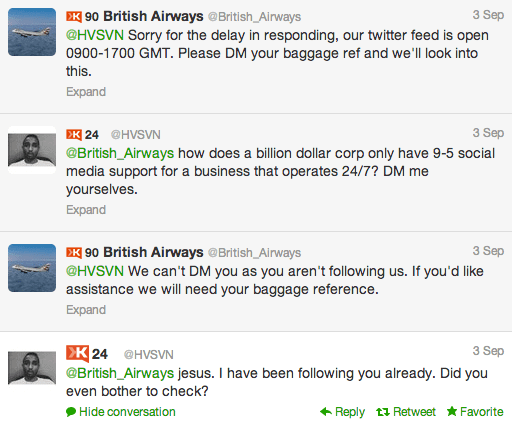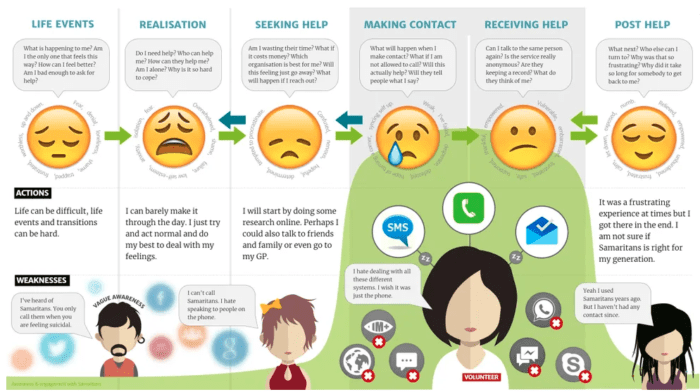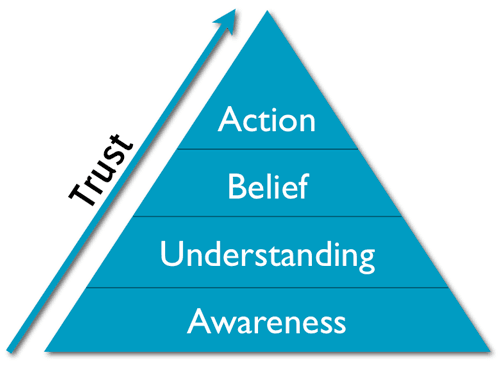A single bad review can have a huge impact on your business, which is why customer service is key. A customer journey map can help improve conversion
Are you facing issues while trying to provide a stellar customer experience? The onus is on the businesses to rectify this situation quickly because customer experience has been a cornerstone of business since the very beginning. However, today, the business landscape is growing increasingly competitive. Businesses are doing more than ever to get customers' attention than ever before.
Download our Free Resource – 10 common website customer experience mistakes
This guide reveals examples of poor website design from different sectors which are commonly seen, but best avoided.
Access the
Not so long ago, the need or want for a product meant we were supposed to drive miles to get to a brick and mortar store to spend hours looking for the desired product. From test driving each option to trying to determine the difference between models, we would make the comparisons in person.
If possible, you might even have ended up asking a friend or two for a recommendation. In a general scenario, there is always a sales rep ready to help who could answer questions and help you proceed with your purchase. Most likely, you’d decide right there, selecting a familiar brand name. Do you know what the biggest struggle was then? Finding a parking spot near the store.
As of now, there are a huge number of options available when it comes to researching and purchasing products and services. You can find almost any product from any brand and compare it by quickly visiting review sites, social media, and blogs. You can find out about everything from quality to price to customer service.
Of course, this also means that negative reviews can influence the buying decision of your end-user. Businesses with just one negative review risk losing as much as 22% of their customers. If three negative articles or reviews pop up in a search query, the potential for lost customers increases to 59.2%. Get four or more negative articles, and you’re likely to lose 70% of your potential customers.
It seems as though the word of a bad experience can travel faster than lightning. One negative review can quickly spread across the globe like wildfire and cause damage to your brand's reputation. Unfortunately, people often tend to remember negative events and reviews more easily than positive ones. Research suggests that it can take 12 positive experiences to repair the damage caused by a single negative one.
Keeping today’s fast pace life into account, most customers don’t bother to complain – they just never come back - leaving you in the dark without explaining why they left in the first place.
- What went wrong?
- How was their experience?
- Is it the price, product, or service; what is the issue?
All you know is that you can suddenly experience a high rate of customer churn. This is why it is important to remember that one single customer can make or break your brand.
What causes bad customer experiences?
Rejection comes in many shapes and sizes, so predicting its cause isn’t easy. However, there are several commonly-reported issues that you should bear in mind:
- Long wait times.
- Unable to understand customer needs.
- Unresolved issues/questions.
- Automation without a human touch.
- Service that is not personalized.
- Rude/angry employees.
There are likely to be more causes of bad customer service than these though. It's easy to put yourself in the place of your customer and consider the last time you were frustrated by a service you received and why. Are your customers having the same experience?
Customer journey mapping: How to make this work?
Customer journey mapping, the concept has the potential to provide companies with a rare ability to better understand their customer in regards to the user experience your brand offers and, therefore, stop problems before they start. Its benefits include:
- Tailoring your UX to the consumer, giving them a better all-around experience.
- Losing fewer customers as they engage with your brand (and therefore increase profit).
Apart from this, by mapping your customer journey, you'll better understand how your business works, be able to spot potential weaknesses, and allocate resources more efficiently. As a result, you will be able to improve and streamline your customer service, as well as identifying (and removing) any potential weak links.
More importantly, discovering, reaching out to people, encouraging conversion, effective delivery, and aftercare are the crucial stages in the process of the customer journey map. You must make sure you truly engage and empathize with the customer’s experience through all five of these stages.
Boost conversions and keep customers happy
Around 80% of businesses believe they offer a superior customer experience, but only a handful of customers agree that this is the case. You can learn from the customers who don't agree by reaching out to them to gather as much information as you can regarding their expectations and whether they are being met and where there is room for improvement.
At the same time, it is a good idea to research websites, especially those that are similar to your own. Keep an eye on them, get to know what they do and what seems to work for them. Then, revisit your website. Can you spot the difference? Is there any similarity between the CX you offer and what they provide?
On top of this, you should be assessing how many people are viewing key parts of your website, clicking through to different areas, staying on your site, or bouncing off. This will help you get a better understanding of whether your content is helpful and engaging, as well as how long it takes people to convert. If too many people are bouncing or exiting, address this. If the conversion process is too long, try and cut it down by addressing the information you provide earlier on.
A holistic approach
If you wish to truly improve your customers' experience, you need to be holistic. After all, if someone reaches the three points of annoyance in the ordering process, they won’t complete their purchase, let alone come back to your site. Even a few small issues can build up and be enough to make a customer abandon their purchase. With a customer journey map; you can create a detailed and segmented journey to help you prevent even small annoyances.

You should identify the ‘Pain Points’ that a customer may experience. This is vital as it will allow you to see which areas of your business are performing below expectations. These can be the areas that customers are reporting a negative or neutral experience or where you can see customers dropping off when you assess your analytics. Get into the nitty-gritty of why they are leaving your website. The chances are, you may not have considered the issue beforehand.
Last but certainly not the least, quantify. This is one of the most crucial things you need to do when you are about to deal with fundamentally subjective and often intangible concepts, such as customer emotion, decision-making, and overall perception of your brand. Mitigating these difficulties using metrics whenever possible, is the best thing to do. Once you have your information through adequate testing and quantifying, nothing can stop you from succeeding.
HP Morgan is a Tech Analyst at
Tatvasoft.com.au, a Custom Software Development company in Australia. He is having Seven years of experience in a Technological domain. He loves to travel to Spontaneous places. Follow him on
Twitter.










